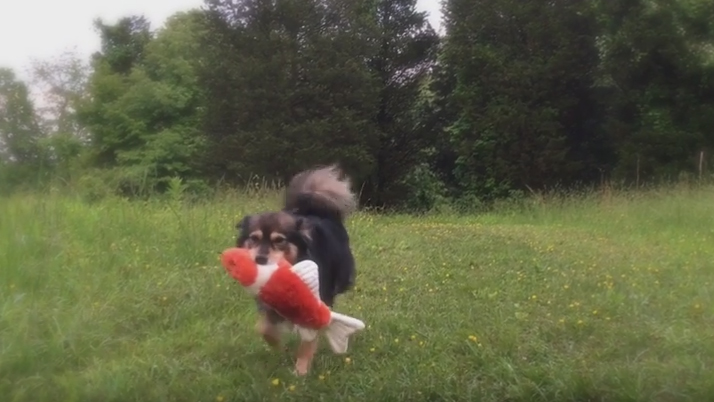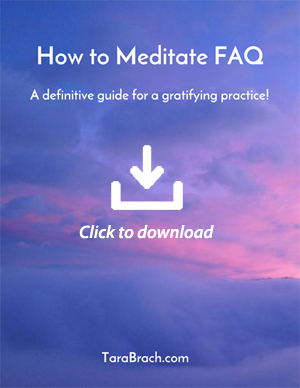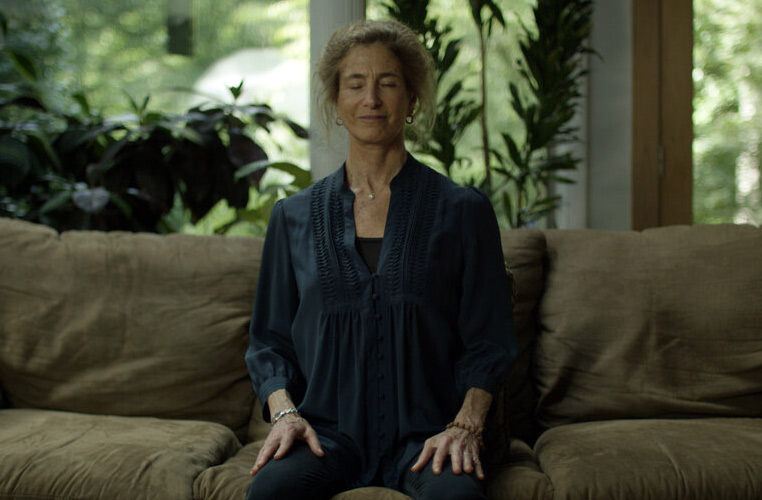Happy for No Reason – For years I’d heard that qigong was an ideal meditation for physical healing, and when I first experimented with it, I did find that the practice helped me feel more embodied and energetically attuned. Qigong is based on a Chinese system of still and moving meditation. At its heart is the understanding that this world is made of chi, an invisible field of energy, the dynamic expression of pure awareness.
When my health hit a new low in the summer of 2009, I decided to explore the practice more deeply by attending a ten-day qigong healing retreat.
During the third day, I remember sitting at the retreat while our teacher was guiding us: “Send chi to the places that are in pain,” he was saying. “Imagine what these parts of you would be like if they were totally vital and strong, energetically flowing with the rest of your body.”
As I sat visualizing flowing streams of light bathing my hurting knees, I found myself becoming doubtful, judging some of the instructions as distinctly “un-Buddhist!” Here I was trying to manipulate my experience and create a happy, healthy body. Whatever happened to letting go of control and accepting life as it is? Wouldn’t all this directing of energy and visualization just make me more attached to being healthy? Given the realities of my illness, this seemed like a losing proposition.
Still, I’d paid my tuition and I kept on following the teachers’ instructions. The next morning I got up before dawn and did the practice on my own—connecting to the ocean of chi, bringing attention and energy to various parts of my body. After about half an hour, I went outside and started walking along a winding path through the Northern California countryside. Each step hurt. My knees ached, and there was stabbing in one of my hips.
“Now what?” I muttered grimly. “Am I supposed to send more chi to my body?”
Then I paused—the resentment toward my body caught my attention. As I looked more closely, the resentment quickly gave way to a familiar grief. Why couldn’t I just walk on this earth without feeling pain? Tears started to flow as I contacted the enormity of my frustration and longing. “I want to feel alive. I want to feel alive. Please. Please. May I feel fully alive.” Naming it opened me to what was behind the longing: I love life. Embedded in the grief, as always, was love. A voice inside me was repeating the words over and over, as a delicate, tingling warmth filled my heart.
I’d been holding back this love, holding back from fully engaging with life. It was a reaction to feeling betrayed by my body, a defense against more loss. But in my fear of being attached to health, I’d not allowed myself to feel the truth—I love life. Qigong wasn’t about fueling attachment, it was about fully embracing aliveness. At that moment I decided to stop holding back my love.
As I allowed the “I love life” feeling to be as full as it wanted, the “I” fell away. Even the notion of life fell away. What was left was an open radiant heart—as wide as the world.
This tender presence was loving everything: the soft streaks of pinks and grays in the sky, the smell of eucalyptus, the soaring vultures, the songbirds. It was loving the woman who was standing silently about two hundred feet away, also gazing at the colors of dawn. It was loving the changing painful and pleasurable sensations in this body. Now, sending chi to my knees made intuitive sense. It was awareness’s natural and caring response to its creation. “I” wasn’t loving life—awareness was loving life.
This experience led me to see and release a limiting and unconscious belief that I’d held for some time—a belief that the realm of formless awareness was more spiritual and valuable than the living forms of this world. This bias against the living world can be seen in many religious traditions. It emerges in some interpretations of the Buddha’s teachings as an insistence on guarding ourselves against the pleasures of the senses—beauty, lovemaking, music, play. It emerges in the superior status of monks over nuns, in valuing monastic life over family and lay life, and in the warnings against attachment in close personal relationships. I now believe this bias comes from fear and mistrust of life itself. For me, recognizing this in my own psyche was a gift.
We do not need to transcend the real world to realize our true nature and to live in freedom. In fact, we can’t. We are aliveness and we are the formless presence that is its source; we are embodied emptiness. The more we love the world of form, the more we discover an undivided presence, empty of any sense of self or other. And the more we realize the open, formless space of awareness, the more unconditionally we love the changing shapes of creation.
The Heart Sutra from the Buddhist Mahayana texts tells us: “Form is emptiness, emptiness is also form. Emptiness is not other than form, form is not other than emptiness.” We can’t separate the ocean from the waves. Our path is to realize the vast oceanness of our being, and to cherish the waves that appear on the surface.
During the final days of the retreat, my willingness to love life unfolded into a very deep, stable happiness. The happiness wasn’t reliant on things being a certain way—my moods and physical comfort went up and down. I was happy for no reason. This unconditioned happiness or well-being is a flavor of awakening. It arises when we trust our essence as awareness, and know that this entire living world is part of our heart. Being happy for no reason gave me a kind of confidence or faith that no matter what happened, everything would be fine.
I returned home and jumped into a delicious daily ritual of meditation and qigong. During those first weeks I’d go to the river and scramble down through rocks and bushes to a secluded beach. Nourished by the sounds of rushing water, the firm sand and early morning air, I practiced presence in movement and stillness. You can probably imagine what came next. After I hurt my knee on the small incline down to the beach, I moved my practice to our deck. Some of the arm movements strained my neck so I had to minimize them. Then standing up started to strain my legs, so I began to practice in a chair. Then it rained for a week straight.
And yet, it was all really okay. More than okay. One of those wet mornings as I was sitting, my mind became very quiet. My attention opened gently and fully to the changing flow of experience—aching, waves of tiredness, fleeting thoughts, sounds of rain. Continuing to pay attention, I felt the subtle sense of aliveness (chi energy) that pervades my whole body. This aliveness was not solid, it was spacious, a dance of light. The more I opened to this aliveness, the more I could sense an alert inner stillness, the background inner space of pure being. And the more I rested in that stillness, the more vividly alive the world became.
After about thirty minutes I opened my eyes and looked at the lush fern that hangs in our bedroom, at its delicacy and grace. I was in love with the fern, with the particularity of its form (how did this universe come up with ferns?), and with the vibrancy and light of its being. In that moment, the fern was as wondrous as any glorious scene by the river. I was awareness loving my creation. And I was happy for no reason. I didn’t need to have things go my way. I was grateful for the capacity to enjoy life, just as it is.
Adapted from True Refuge.
Enjoy this talk on: Happy for No Reason – Part 2: Opening to Happiness
For more information: www.tarabrach.com


